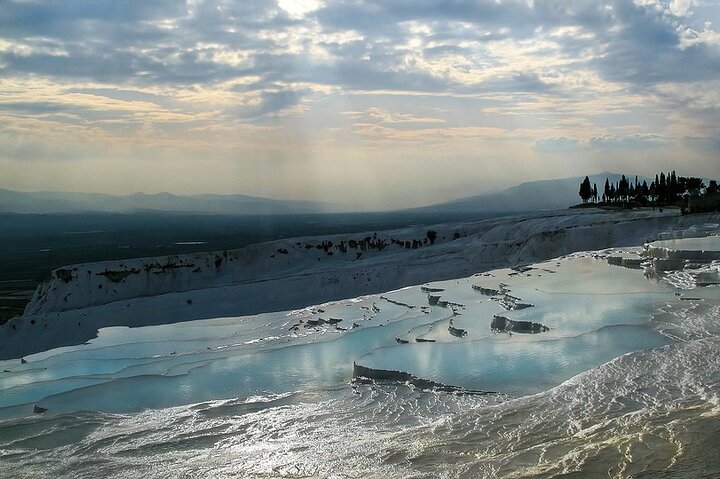Exploring the Ancient Wonders of Laodicea and Pamukkale
Drawn by the allure of ancient ruins and natural wonders, I embarked on a private tour of Laodicea and Pamukkale. Join me as I explore the rich history and breathtaking landscapes of this remarkable region.
A Journey Through Time: Laodicea’s Ancient Marvels
As a former professor of European history, I have always been drawn to the ancient ruins that whisper stories of the past. My recent journey to Laodicea, a city that once thrived in the heart of Anatolia, was nothing short of a historian’s dream. The private tour began with a visit to the Church of Laodicea, one of the seven churches of Revelation. Standing amidst the ruins, I could almost hear the echoes of early Christian pilgrims who once walked these grounds, seeking spiritual enlightenment.
The Grand Theatre of Laodicea was our next stop, a magnificent structure that once seated 20,000 spectators. Built in the 3rd century BC and expanded during Nero’s reign, the theatre is a testament to the architectural prowess of the ancient Greeks and Romans. As I stood in the center of this vast amphitheater, I imagined the vibrant performances that once captivated audiences, a vivid reminder of the cultural richness that defined this ancient city.
Our exploration continued to the Stadium and Gymnasium of Laodicea, where the grandeur of Roman engineering was on full display. Constructed in 79 AD, the stadium’s 350-meter length and 24 rows of seats spoke of a time when athletic prowess was celebrated with great fervor. The gymnasium, dedicated to Emperor Hadrian, was a place of both physical and intellectual training, a reflection of the holistic approach to education that the Romans so valued.
The Enchanting Terraces of Pamukkale
Leaving the ancient city behind, we journeyed to the natural wonder of Pamukkale, known as the “Cotton Castle” for its gleaming white travertine terraces. These terraces, formed by calcium-rich thermal waters cascading down the slopes, create a surreal landscape that seems almost otherworldly. Walking barefoot on the warm, smooth surfaces, I felt a deep connection to the earth, a reminder of nature’s ability to create beauty that rivals even the most magnificent man-made structures.
The thermal pools of Pamukkale are not only a visual delight but also a soothing retreat. The warm waters, rich in minerals, have been sought after for their healing properties since ancient times. As I soaked in the natural pools, I couldn’t help but think of the countless travelers who have come here over the centuries, seeking relief and rejuvenation in these sacred waters.
Swimming with History: Cleopatra’s Pool
Our final destination was the legendary Cleopatra’s Pool, a place where history and relaxation intertwine. This ancient pool, warmed by natural hot springs, is scattered with marble columns that once adorned the Temple of Apollo. Swimming amidst these ancient relics was a surreal experience, a chance to literally immerse myself in history.
The pool’s association with Cleopatra adds an air of mystique, as legend has it that the Egyptian queen herself once bathed in these waters. Whether or not this tale holds true, the experience of swimming in a pool surrounded by antiquities is one that I will cherish forever. It was a fitting end to a day filled with exploration, discovery, and a profound appreciation for the rich tapestry of history that defines this remarkable region.
In conclusion, the Laodicea & Pamukkale Tour offers a unique blend of historical exploration and natural beauty, a journey that captivates both the mind and the senses. For those who, like me, are drawn to the stories of the past, this tour is an unforgettable experience that brings history to life in the most vivid and engaging way.





































